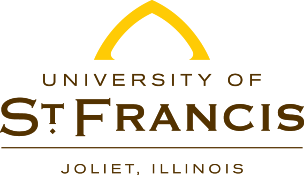All nonimmigrant visitors are required to have a valid visa (***except Canadians) in their passport to be allowed entry into the United States. For general information, see the U.S. Department of State website(link is external).
- An appointment for a visa interview at a U.S. embassy or consulate abroad may be required.
- Visas cannot be issued inside the United States.
Steps for F-1 entry visa:
- Obtain I-20 (F-1) from USF
- Check the current wait times (link is external) for visa appointments and issuance in your city.
- Pay the SEVIS Fee, if applicable.
- Make a visa appointment and go to an interview at a U.S. embassy or consulate.
***Canadian citizens are not required to apply for a visa to enter the United States as an F-1, but must still pay the SEVIS Fee and present their I-20 at the U.S. port of entry. However, if the visitor has “Landed Immigrant” status in Canada, a U.S. visa is required to enter the United States.
Read the U.S. Department of State website (link is external) for more information about the visa application process and Temporary Visitors to the U.S. (link is external)
Since visa appointments are limited and visa processing times (link is external) can be lengthy, make your appointment as early as possible. Consulates will generally accept appointments up to 120 days prior to the start of studies. There may be long waiting periods for appointments, especially May through August. However, consulates may give priority to F-1 student applicants, if requested.
Additional Information
Be mindful of your social media presence!
Visa application includes specific questions requiring you to list all social media platforms, identifiers, and handles used in the previous 5 years.
May also require:
- Point of Contact in the US? F Enrolled Students should use the USF contact address and phone and provide the name of the DSO who issued your I-20
- Address Where You will Stay in the US? If you don’t know your U.S address, use the address you will use when you first arrive in the US, which might be a temporary address like a hotel or friend.
- Five years of previously used telephone numbers, email addresses, and international travel
- Admission of all prior immigration violations
- Whether specified family members have been involved in terrorist activities
When going to the visa interview, bring:
- Passport (valid at least six months into the future)
- Certificate of Eligibility I-20 (F-1)
- Proof of admission (F-1 new students) or proof enrollment (F-1 currently enrolled students)
- Evidence of Financial Support
- Visa application forms and fees
- SEVIS Fee receipt
- F-1 Students on OPT or STEM OPT Extension do not require proof of enrollment, but they must also bring an unexpired EAD card and a job offer letter or current employment verification letter.
Some consulates may require additional documentation, so check the consulate website for visa application instructions. Visa application forms and fees can be found on the consulate website.
During your F-1 visa interview or at the Customs Control at the port of entry you may be asked questions about your studies, your university choice, how you are planning to pay for your education, your post-graduation plans, and more. Here are some of the common questions that you may expect.
What’s your purpose for going to the U.S.?
- Why did you choose to study in the U.S.?
- Which University will you attend?
- What will be your degree and major?
- Did you go to a University at your home country?
- What is your occupation at the moment?
- Why don’t you continue your studies in your home country?
- How many universities did you apply to and in which countries?
- How many universities sent you an admittance letter?
- Have you ever been to the U.S. before?
- Why did you choose a university in Boston?
- Where will you be staying while in the U.S.?
- What do you know about U.S. educational system?
- What is your English test score?
- What is your GPA from your previous institution?
- How will you deal with the cultural differences?
- Who will support you financially while you are in the U.S.?
- What do your parents do for a living?
- Have you received any scholarships for your education?
- How much is the cost of your education in the U.S.?
- What are your plans after you finish with your studies in the U.S.?
- Do you have relatives or friends in the U.S.?
- Do you have a career that you want to pursue after you finish with your studies?
- Tell me a little bit about your family. Do you have any siblings?
Please use this guide from NAFSA for your reference: 10 Points to Remember When Applying for a Student Visa.
In some cases, the consulate may require a security clearance on the visa application. A visa may be approved, but cannot be issued until the security check is cleared. It is common for the security clearance to take a couple of weeks to a couple of months. If you are subject to a security clearance, please email International Admissions at intadmissions@stfrancis.edu![]() so we can advise on the implications of a delayed arrival.
so we can advise on the implications of a delayed arrival.
Entering the U.S.
When preparing for your arrival to the U.S., you should plan your travel according to the information provided by your college. According to immigration regulations, F-1 student visa holders can enter the U.S. up to 30 days prior to the program report date on the I-20.
Students transferring to USF in F-1 status from another institution or changing their degree level at USF may stay in the U.S. or travel between programs. And, they may enter the U.S. more than 30 days before the new program start date listed on your I-20.
Documents to bring when entering the U.S.
- Valid passport with an official F-1 visa stamp
- Your original I-20 issued by USF
- I-901 SEVIS fee receipt
- Financial documents
- Admissions letter
At the U.S. port of entry, you will be required to present your passport and I-20 to the immigration officer who will stamp your passport. In most cases, the officer notes “D/S” (Duration of Status) on your passport pages. This means you are allowed to stay in the U.S. for the length of time indicated on your I-20, provided that you maintain full-time enrollment and a valid F-1 visa status. Ensure your passport is properly stamped before exiting the immigration inspection area. Do not enter the U.S. in visitor status (B-1/B-2, WT, or WB). This status does not permit full-time study in the U.S. After your arrival, print your Admission (I-94) number at cbp.gov/I94 and keep a copy of all travel documents (I-94 information, F-1 visa, and I-20) for your personal records. Ensure your I-94 print out contains the correct information, including F-1 visa status and “Duration of Status.”
This is not legal advice and it is recommended that students reach out to their closest Embassy/consulate and/or Admissions counselor for proper guidance.

